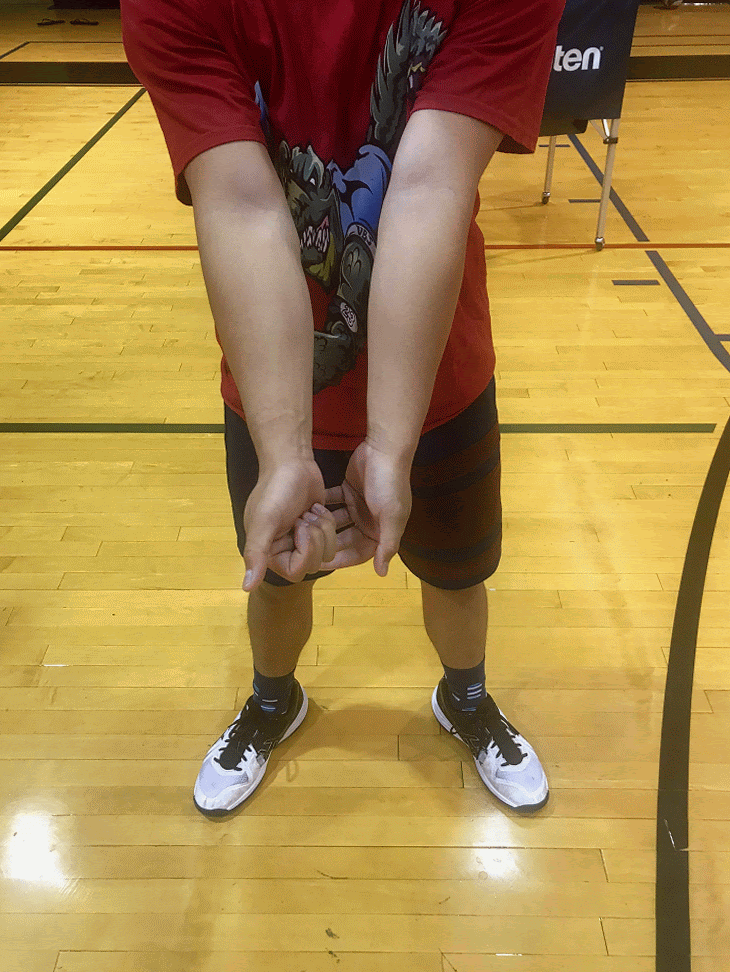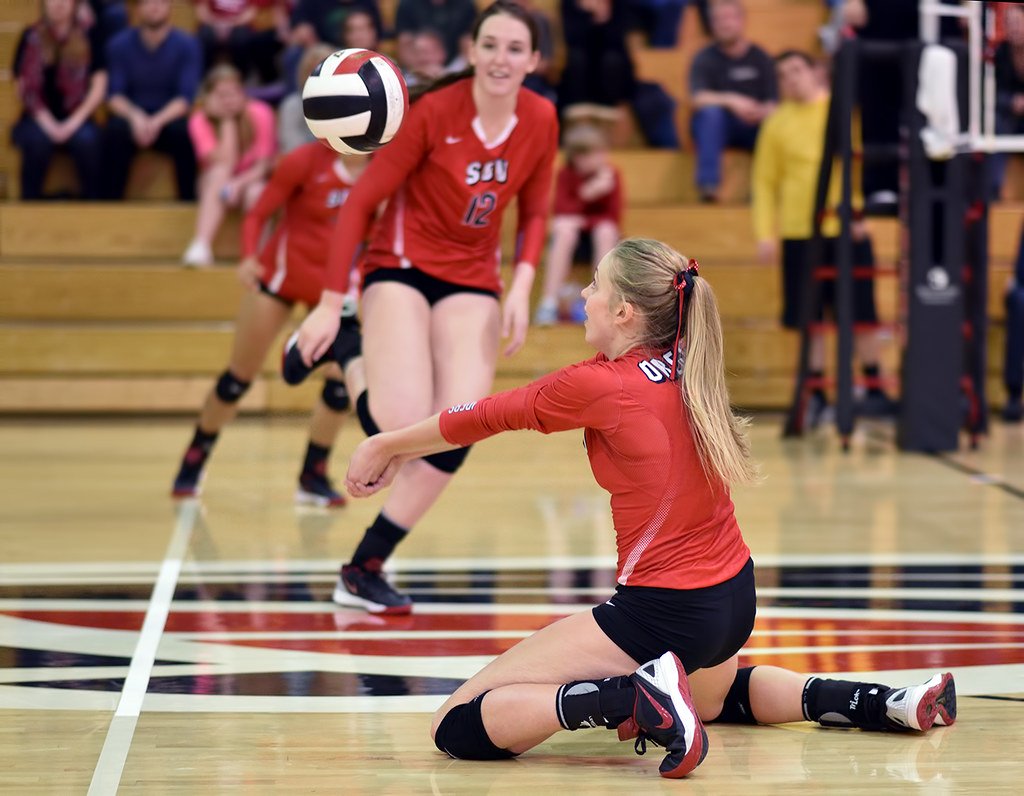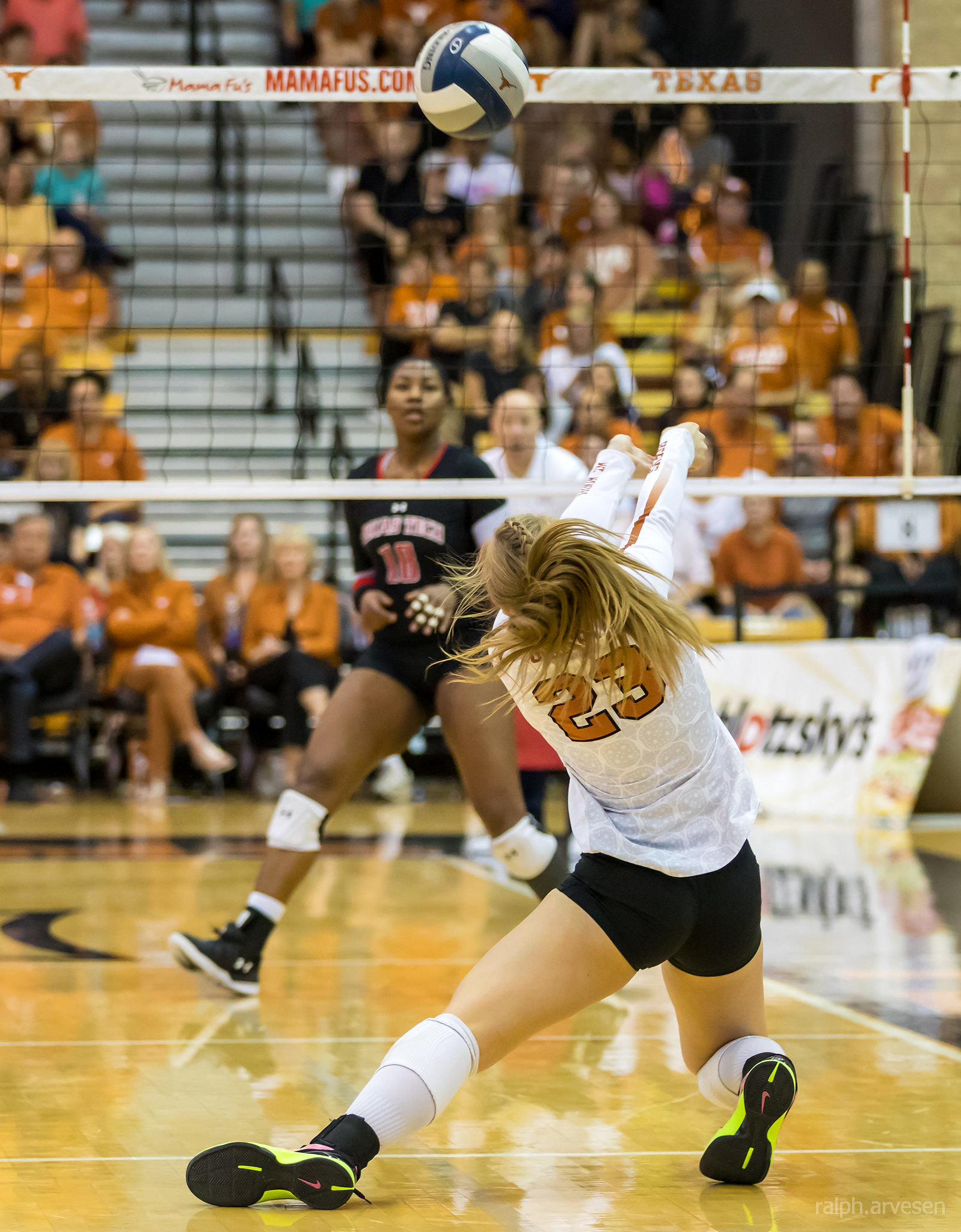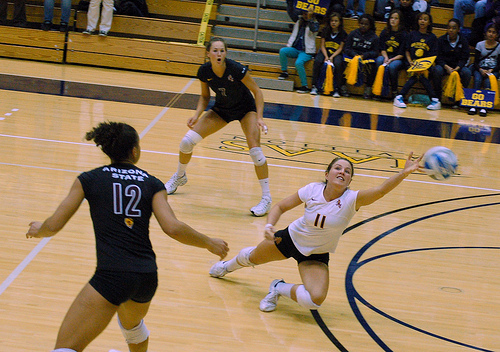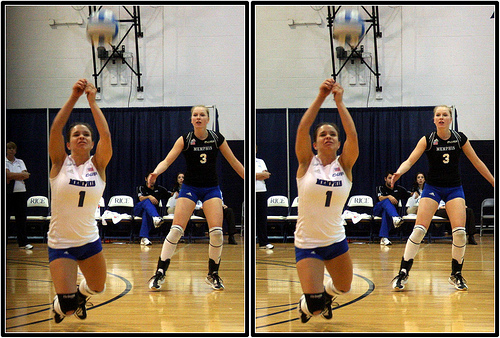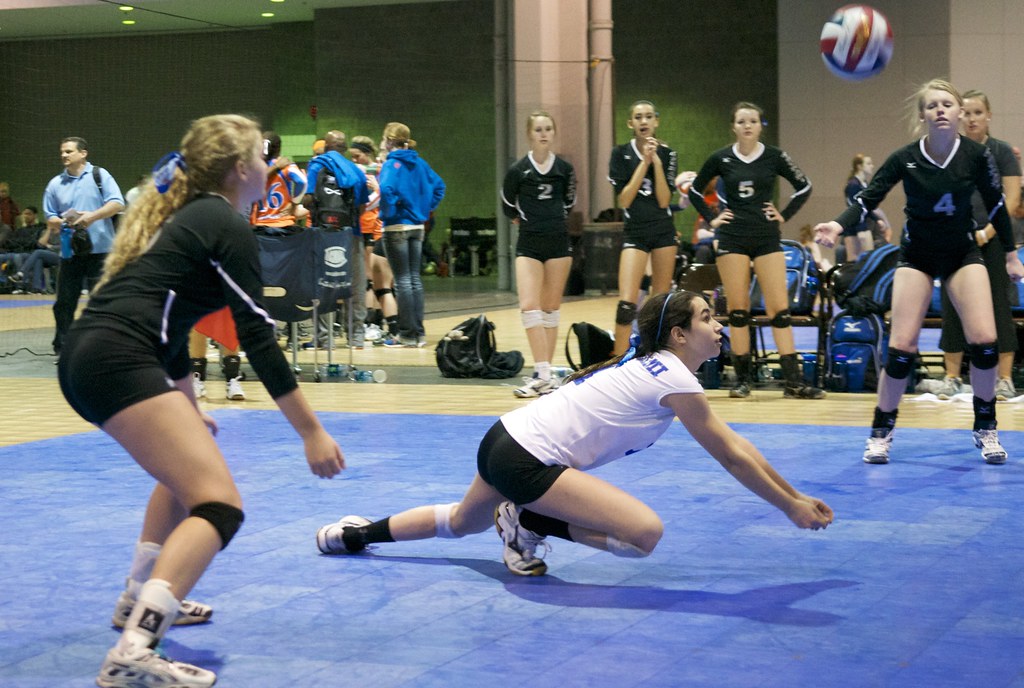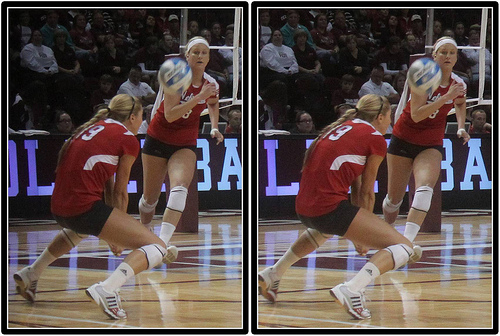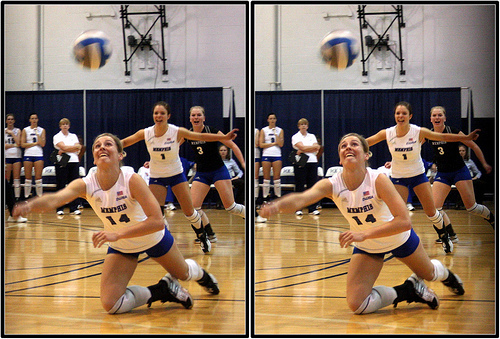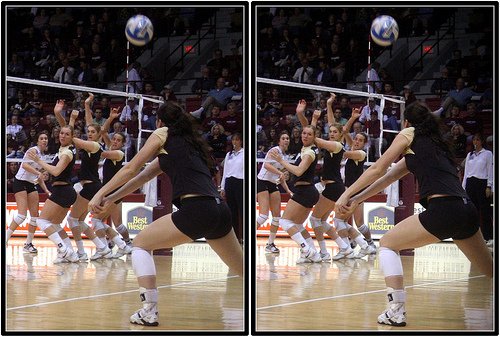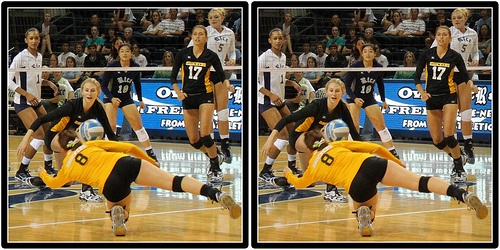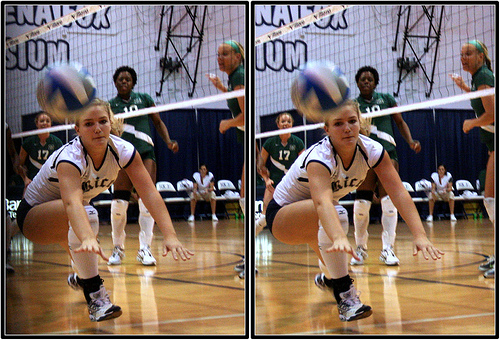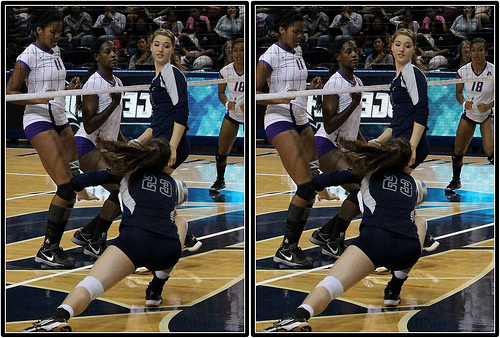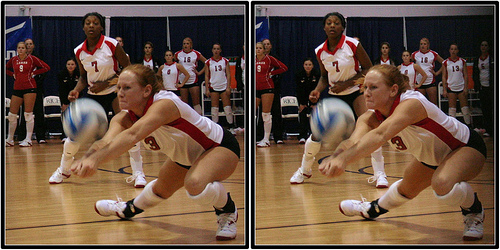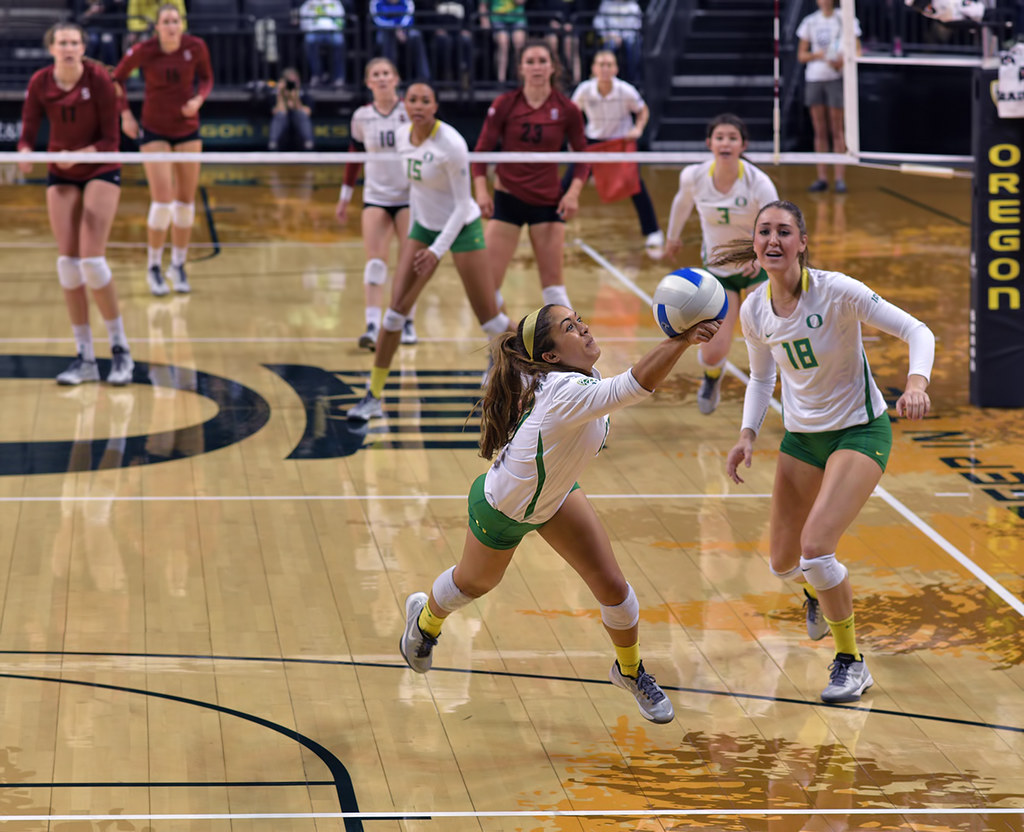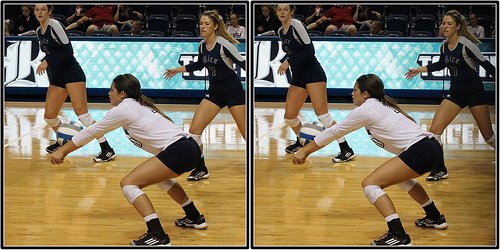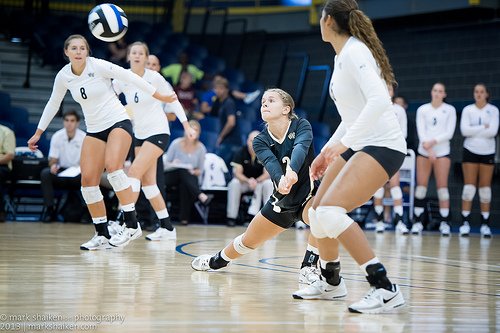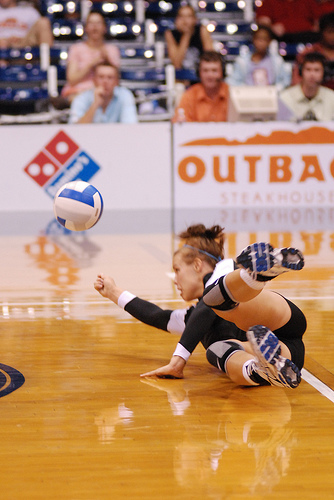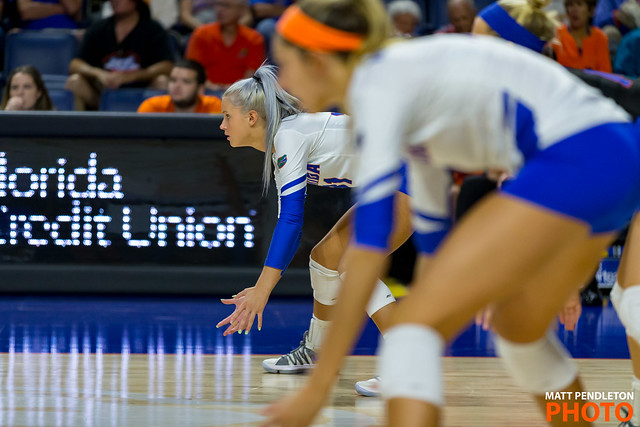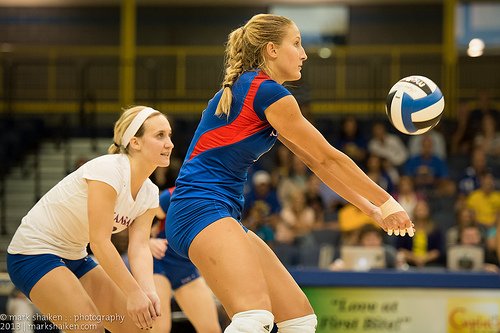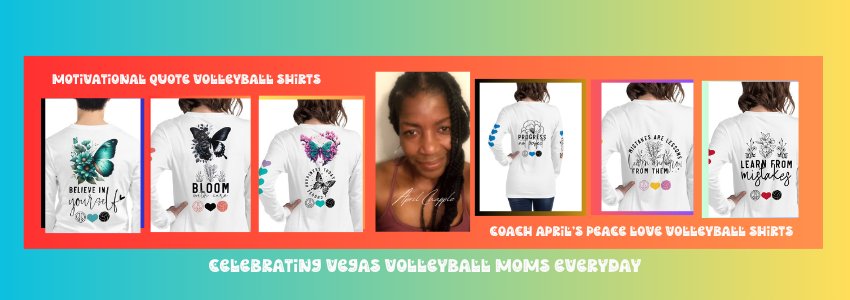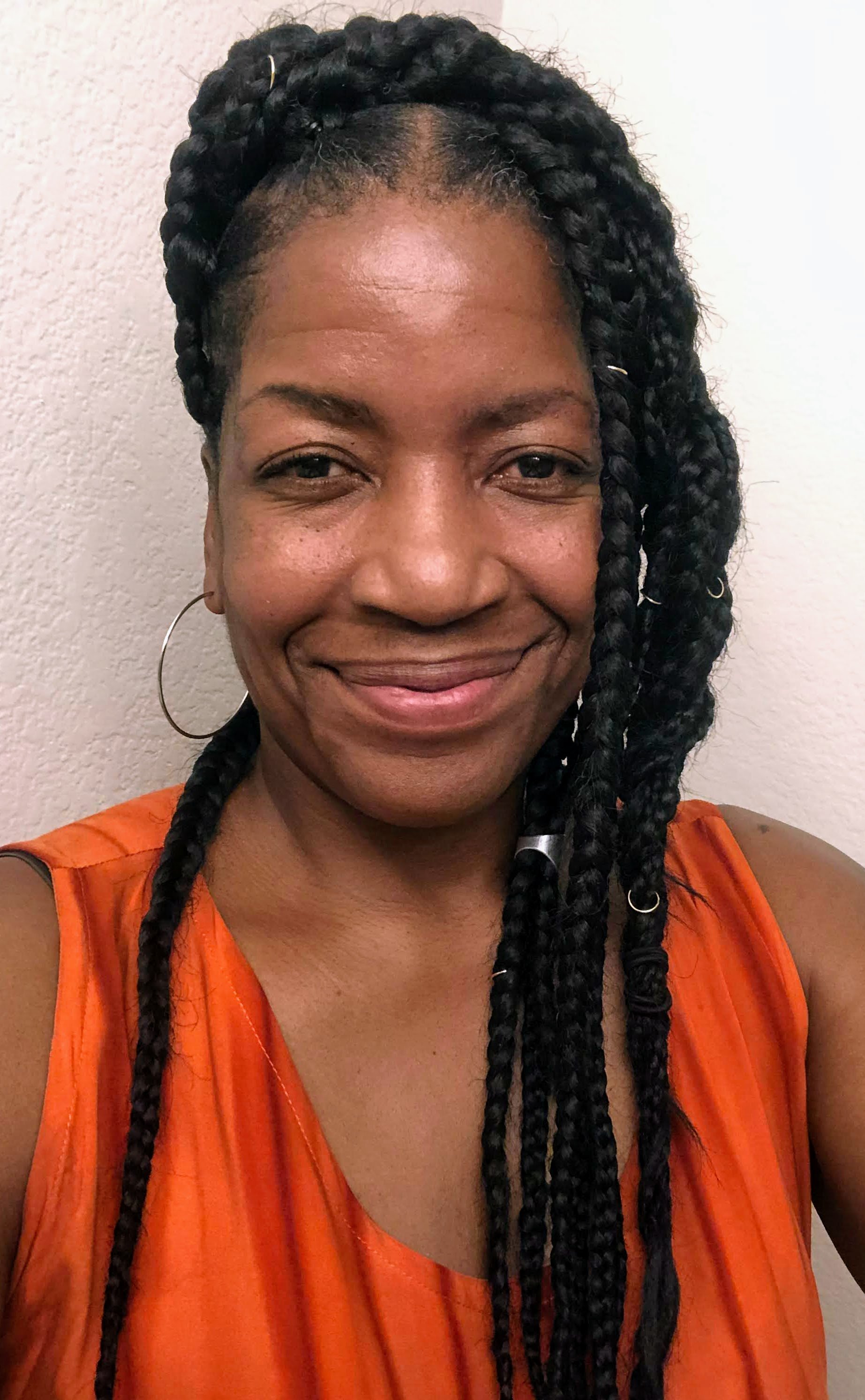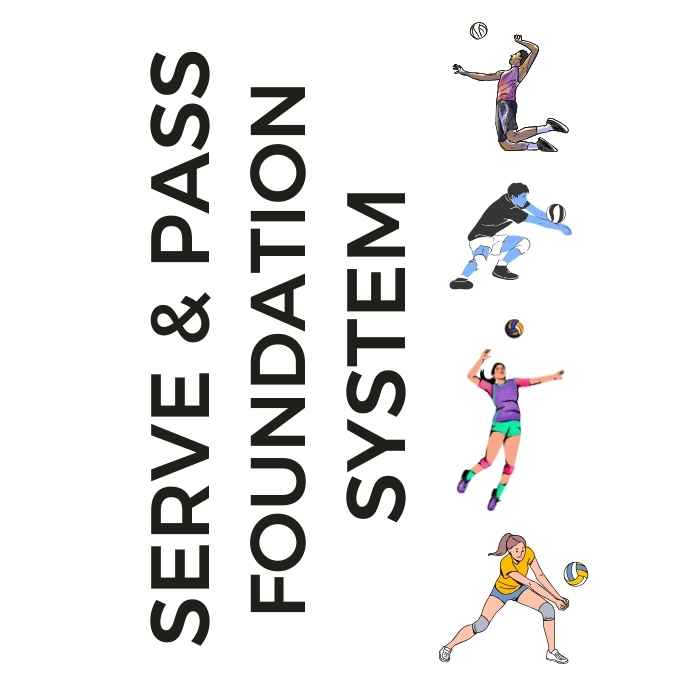
Serve + Pass Foundation System: The Complete Skills Arsenal The two-skill mastery system that transforms inconsistent players into the athletes coaches build their lineups around. Stop Struggling With The Two Most Important Skills In Volleyball!
- Improve Your Volleyball with Coach April
- How To Start Playing Volleyball
- Whats A Dig in Volleyball? Tips On How To Keep The Ball Off the Floor
Whats A Dig in Volleyball? Tips On How To Keep The Ball Off the Floor
Whats a dig in volleyball? Discover the most powerful secrets, tips, drills, skills I've written about blocking, liberos and digging skills on ImproveYourVolley
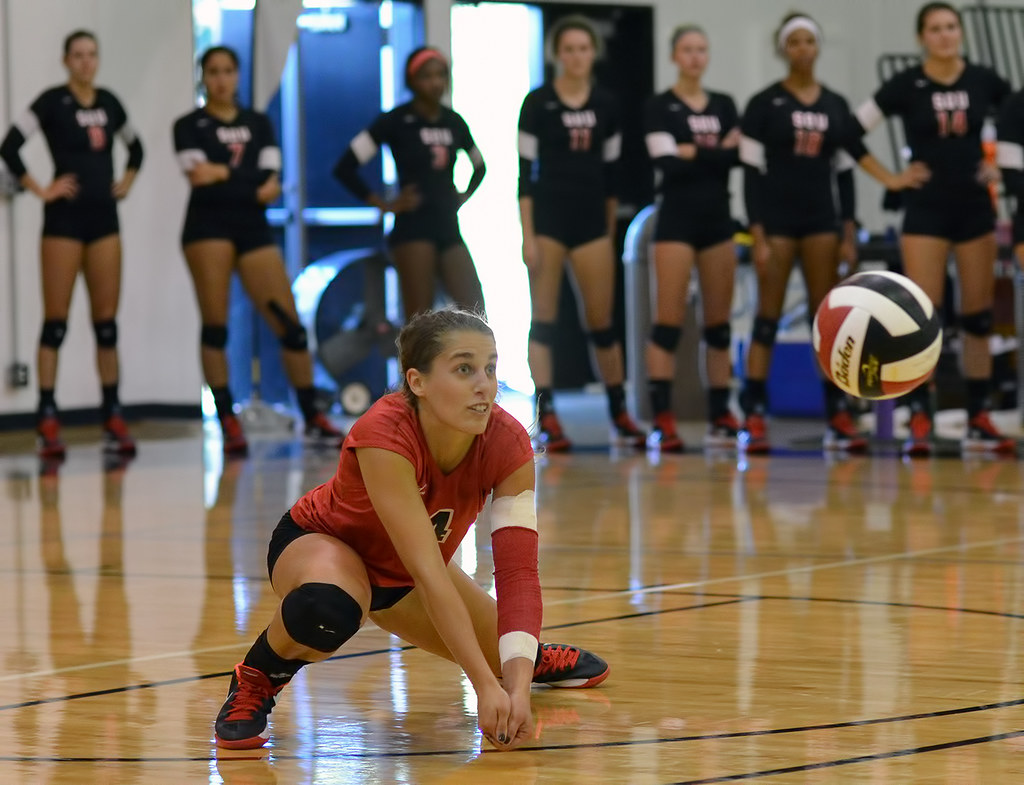 Whats a dig in volleyball?
To "dig a ball" you use your forearms to create a platform, which then deflects the ball upward and keeps it in play so another teammate can set, pass or hit it over the net or to another teammate. (photo by Al Case)
Whats a dig in volleyball?
To "dig a ball" you use your forearms to create a platform, which then deflects the ball upward and keeps it in play so another teammate can set, pass or hit it over the net or to another teammate. (photo by Al Case)In simple terms, a 'dig' is a key defensive move by a player that describes how they attempt to keep the ball from hitting their team's court floor after an opposing team's player spiked, tipped, down balled or roll shot it into their court.
Volleyball Digging Drills: The Hit And Dig Drill We Do In Boot Camps, Practice and Private Sessions is used in warmups to improve digging technique (and hitting technical) skills.
The term 'dig' comes from the action of looking like a player is "shovelling" or in other words using the digging action you'd use if shovelling... the ball keeping it off the ground before it makes contact with the court floor.
 Matson Collection, Public domain, via Wikimedia Commons
Matson Collection, Public domain, via Wikimedia Commons
The dig is mostly used when the ball is attacked by a player on the opposing team, who's aiming to hit it with such power and at an angle that forces the ball to hit the floor on your team's side.
The intent of the digger, that would be you, is to 'defend' your court - by keeping that attacked ball off the floor so the other team doesn't score a point.
How To Dig in Volleyball
When contacting the ball, do not swing your arms to meet the ball. The attack hit is hard enough and you don't need to add additional movement to get the ball up
Digs not only prevent the opposition from scoring, but they also set the stage for your team to counterattack with a combination of dig-set-hit offensive plays that give your team a chance to score.
Now that I've outlined what a dig in volleyball is, let's dig deeper (see what I did there?) into the
- digging technique
- digging skills
- dig drills
- rules for digging
and other important elements you need to know about this defensive volleyball move.
How Do You Dig A Ball?
1. Starting Position:
You should be in a balanced athletic position with feet just outside your shoulders knees slightly bent, and shoulders in front of your knees, with arms extended and palms open and facing upwards towards the ceiling.
With this balanced and proactive 'ready position' you're able to react quickly to either side of your forward or behind you in order to move in any direction as needed.
Volleyball Digging Drills: The Hit And Dig Drill
With this balanced and proactive 'ready position' you're able to react quickly to either side of your forward or behind you in order to move in any direction as needed.
Charlie works on digging in the Hit and dig drills done in private training clinics and practice.
2. Reading the Ball:
As the opposing team's hitter contaacts the ball, the digging player should track 9with their eyes watching the speed, pace and path of the ball) also called the ball's trajectory, in order to anticipate, also called "reading" what path the ball is taking and where its going to land.
The player must then quickly move to place themselves in the path of the incoming ball.
Watch 7th grader, Izzy my client since 6th grade, who is digging two hitters at a time. She has to quickly read the first hitter's arm and then track the path of the "attacked ball" from them so she knows where her feet and then her platform need to be before she digs their ball...BEFORE looking for the next hitter's arm to do the same thing again...and still dig the ball to the intended target.
3. Forming the Platform:
As the ball approaches, the player creates a 'platform' with their forearms by clasping their hands together and straightening their arms. This platform is what the ball will contact.
4. Lowering the Hips and Making Contact:
Just after the fast incoming ball crosses the net and before the ball arrives to your area of the court or right at you, you must lower your hips, ensuring they are lower than the ball.
As the ball connects with your platform (the forearms), your arms should 'give' a little, without bending your elbows, to absorb the ball's power, while guiding the ball up into the air, without swinging your platform, but with a platform that's angled towards your intended target area or player where who can then set up the next play.
5. Re-position Back To Base:
After the dig, the player should immediately return to their base position on the court and be in their ready digging position to prepare for the next play in that same rally. This could be another dig, a set, or perhaps even an attack.
The better you can anticipate where the ball will go and position yourself accordingly, the more chances you create for yourself to get more balls up in defense.
A successful dig depends not only on technique but also quick reflexes, fast feet, good reading skills, the ability to remember past plays and opposing player attacking tendencies and a good sense of how members of the opposing team plans to attack the ball.
Keep in mind that the goal of the dig is not simply to prevent the ball from hitting the floor but also to control the ball's direction, so you can help your team set up a successful counter-attack.
Your What Is A Dig Volleyball Guide to Improved Digging Skills
Exploring the Resource Section:
Whether you're new to the game or looking to add finesse to your skills, proper guidance can go a long way in mastering the art of the dig.
That's why we've created an extensive resource section on this webpage dedicated to digging in volleyball.
From the fundamentals of digging to advanced techniques and drills, you'll find resources packed with valuable insights and tips.
This page includes a range of resources designed to answer all your queries about the dig in volleyball.
We dig into topics like the libero's role, digging rules, specific drills to improve your digs, and more.
Each resource is clearly labeled and easy to navigate, ensuring a seamless learning experience.
Whether you're a player looking to enhance your in-game performance or a coach wishing to pass on comprehensive knowledge to your team, these resources are structured to enrich your learning journey. So go ahead, dig deep and explore!
In the resource section
put all digging pages and libero pages in each section by category so
How To Play
Rules
Terms
Tips
Technique
Libero
Varsity
Your What Is A Dig Volleyball Guide to
Digging Basics
When you dig a volleyball on your club or varsity team, you'll need to be okay with digging and defending hard hitting attackers on the opposing team.
The volleyball dig or digging a volleyball up in defense means that you are able to keep an attacked ball by the opposing team off your court floor.
Your What Is A Dig Volleyball Guide
The Libero
Liberos and defensive specialists are backrow defensive players who can improve volleyball digging efficiency by using these tactics in practice drills.
The libero volleyball player has specific qualities and specialized responsibilities in their defensive roles along with special rules created just for them.
Your What Is A Dig Volleyball Guide
Digging Rules
The volleyball libero is a specialist in digging, passing and playing in the backcourt who wears a contrasting color jersey and has defensive responsibilities.
Your What Is A Dig Volleyball Guide
Digging Drills
Also called 'Hit and Dig' volleyball drills these are used frequently in our volleyball practices to work on hitting and defense technique.
Volleyball Digging Drills:
How To Do the "Hit and Dig" Drill
We do volleyball digging drills everyday in our Volleyball Voice Boot Camp classes so that liberos, defensive specialists and players who play in the backrow work on improving their digging skills.
Volleyball Digging Drills: Jacob Helps Train Carmela in Digging Consistency and Footwork
Your What Is A Dig Volleyball Guide
Digging Skills
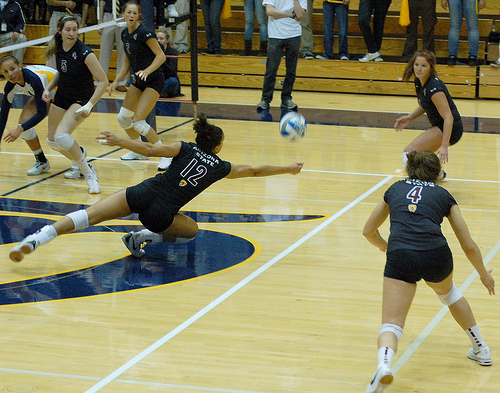
Volleyball Skills For Digging: A List of 9 Volleyball Basic Dig Steps
Improve your volleyball skills for digging using this comprehensive list of volleyball basics for before, during and after you need to dig a volleyball.
A volleyball defensive player like a libero or defensive specialist needs to be aggressive in the backrow while passing, digging and communicating well.
Your What Is A Dig Volleyball Guide
Digging Terms
The four digging volleyball terms explained for liberos and defensive players are
- "up"
- "tagged"
- "touch" and
- "lip"
which describes what happens in the backrow.
Digging and defensive volleyball terminology and words for liberos, defensive specialists and backcourt players who need to learn more volleyball vocabulary.
The "chester" and the "facial" are two volleyball terms used to describe how you can legally dig a ball by using your face or your chest instead of your hands.
These two terms in volleyball, the six pack and the facial, describe digging actions liberos know because they explain how to dig a volleyball using your face.
Your What Is A Dig Volleyball Guide
Digging Tips
These 3 volleyball tips for digging a ball describe how to dig a ball without taking a step, taking one step and taking three steps away from your base in defense.
Your What Is A Dig Volleyball Guide
Digging Techniques
These 10 defense volleyball techniques are answered on how to dig a volleyball better, where to be in defense, and what to watch when the other team is hitting.
Your What Is A Dig Volleyball Guide
How to Dig A Volleyball
Dig volleyballs that are 3-4 feet away from you by using the barrel roll technique we teach in Vegas Volleyball Boot Camp classes.
Dig more volleyballs by watching the the ball, the setter, the ball and then the hitter when the opposing team attacks the ball.
Your What Is A Dig Volleyball Guide
How To Dig Tutorials
These digging volleyball basics teach you where to contact the ball on your arms, where feet and legs need to be and how to read hitters better in defense.
To make a volleyball dig both arms are held together at the wrists so your arms form a flat surface, called a "platform" for the ball to bounce off of.
Your What Is A Dig Volleyball Guide
Digging Videos
To "dig" the ball is a slang term used to mean "defend" the ball up in the air which requires you to stay in a low athletic stance with your knees bent while using your forearms to deflect the ball up into the air after its been hit by a member of the opposing team in order to keep it from hitting your court floor.
Three Step Barrel Roll
Volleyball Digging Techniques
Usually done during warmups in order to get warm-up to play defense in the match.
For balls that are tipped to the middle of the court we teach the three step barrel roll technique to dig a volleyball.
The roll or barrel roll is one of the several acrobatic individual defense techniques you can use to collapse to the ground after finishing a volleyball dig that takes you off balance.
This technique helps you complete your defense action safely and most importantly...allows the play to continue without the ball hitting the floor.
The "roll" is used as a way to finish to the floor and recover your footing after digging an attacked or deflected ball you had to leave your feet and hit the ground for
One Step Sprawl
Volleyball Digging Information
Usually done during warmups in order to get warm-up to play defense in the match.
To dig a volleyball that's more than 2-3 steps away from you and low to the floor, you need to know
- how to play balls up on the move, then
- complete your digging action and
- fall to the ground in a safe way that you get back up and keep playing without getting hurt.
For the balls hit or tipped close to you in defense we use the extension and pop up to drop our hips fast to beat the ball to the floor.
For balls spiked further away we teach the extension and one step to barrel roll to get to balls that go up over the block before they come down.
Do You Follow Me on Pinterest?
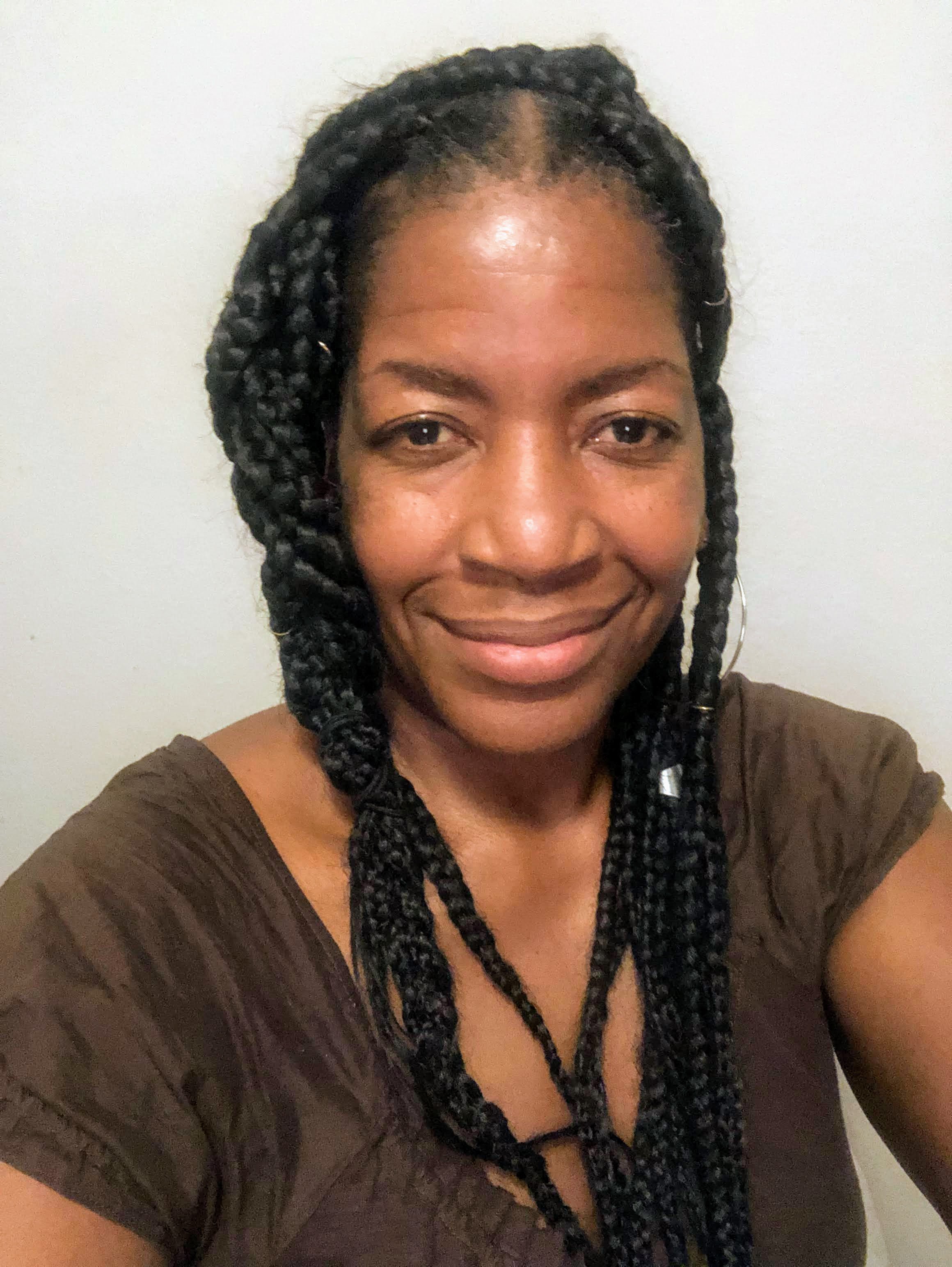 Private or semiprivate volleyball indoor/sand lessons are an excellent way for young Las Vegas high school volleyball players to quickly improve their individual skills through a private or semi-private coaching experience.
These lessons are conducted by former pro volleyball player, former USA Volleyball High Performance instructor and Evaluator and Tstreet Vegas 18s head Coach April Chapple on a weekly basis.
Sign up now!
Private or semiprivate volleyball indoor/sand lessons are an excellent way for young Las Vegas high school volleyball players to quickly improve their individual skills through a private or semi-private coaching experience.
These lessons are conducted by former pro volleyball player, former USA Volleyball High Performance instructor and Evaluator and Tstreet Vegas 18s head Coach April Chapple on a weekly basis.
Sign up now!Follow me on Pinterest Volleybragswag to improve your game even faster!
I share alot of individual, partner and easy-to-do volleyball serving drills we do in class with my followers.
Many of these volleyball practice drills you can do at home by yourself or try at your next practice with your teammates.
If you're a B team or JV player trying to make varsity next year...your goal should be to complete 1000 reps a day of at least three of the basic skills on your own...volleyball passing, serving and setting should be at the top of the list.
Your What Is A Dig Volleyball Guide
Where do you need to go now?
Here are three options:
- Learn more about the volleyball information on Improve Your Volley.com in the Related Links below.
- Follow the suggested reading on our Sitemap page Learning How To Play (Sitemap)
- Or visit the pages in the Information section in the drop down menu at the top of the page.
If your athlete struggles with consistent serve receive, gets subbed out, or is overlooked for playing time—this is the fix you’ve been looking for.

Struggling with passing consistency?
I help talented passers tired of getting pulled from games because of inconsistent serve receive skills BUILD passing confidence without expensive private lessons using the same 3-step system that's helped dozens of my athletes get recruited.
Download my eBook for $17.99 and start building the passing confidence that keeps you on the court—and gets you seen by college coaches.
From Lady Vol to Legend: Coach April Produces Powerful Passionate Players...is that you?
What Are You Looking For?
Click to Download Your Pre Serving Ritual Mastery Checklist pdf:
🎯Volleyball Pre Serving Ritual Guide -
Players! Learn How To Transform Your Serve from Weak to Weapon
Click to Download Your Parent's Volleyball Serving Checklist pdf
🎯Parent's Volleyball Serving Checklist Guide
Parents! Help Your Player Develop Championship Serves (Even If You've Never Played)
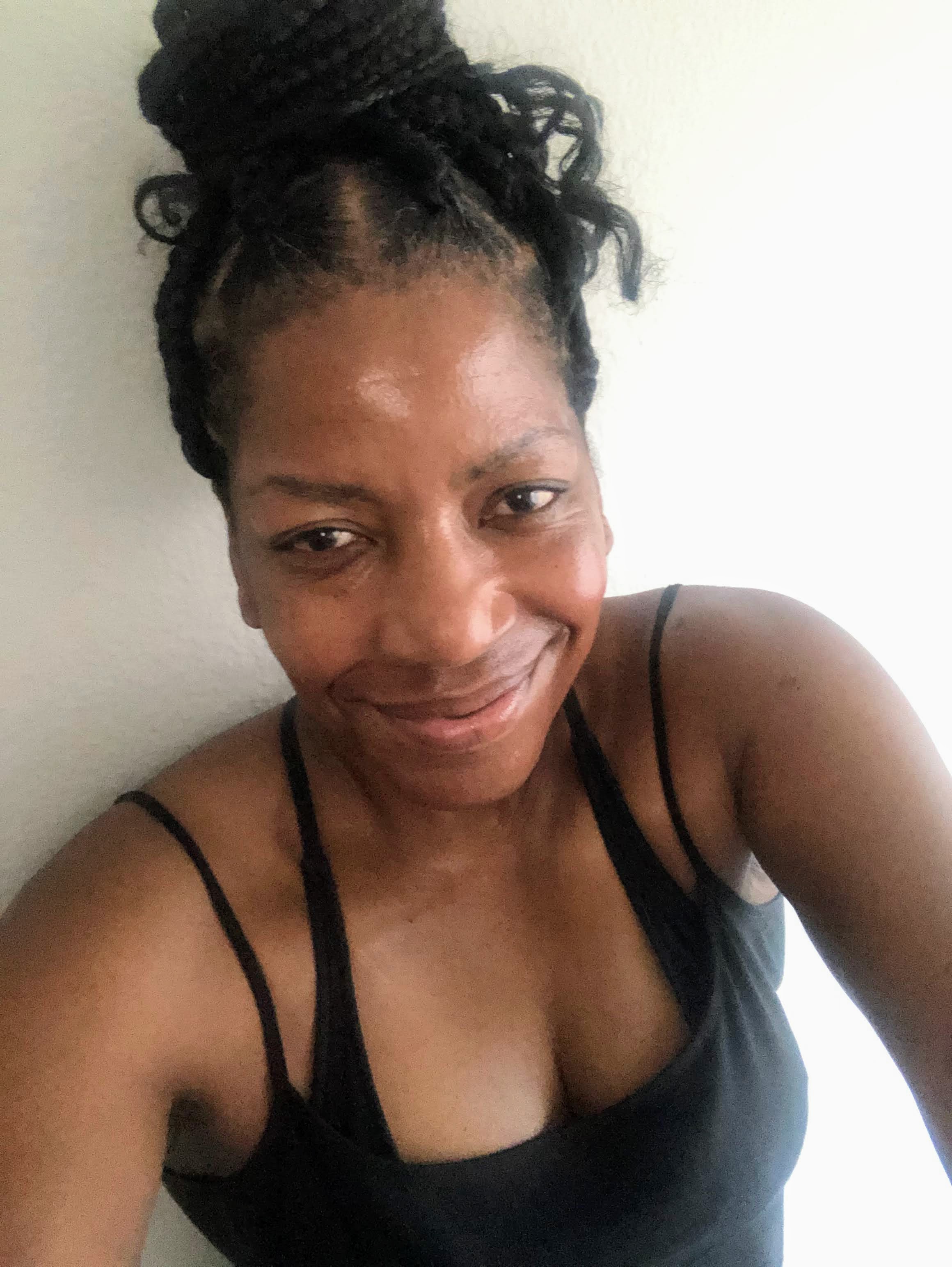
Hi there!
Thanks for stopping by. Hope you learned something today that will help you reach your volleyball goals.
Be sure to subscribe to my email newsletter so you can learn more each week!
Stay strong! Stay motivated!
-Coach April
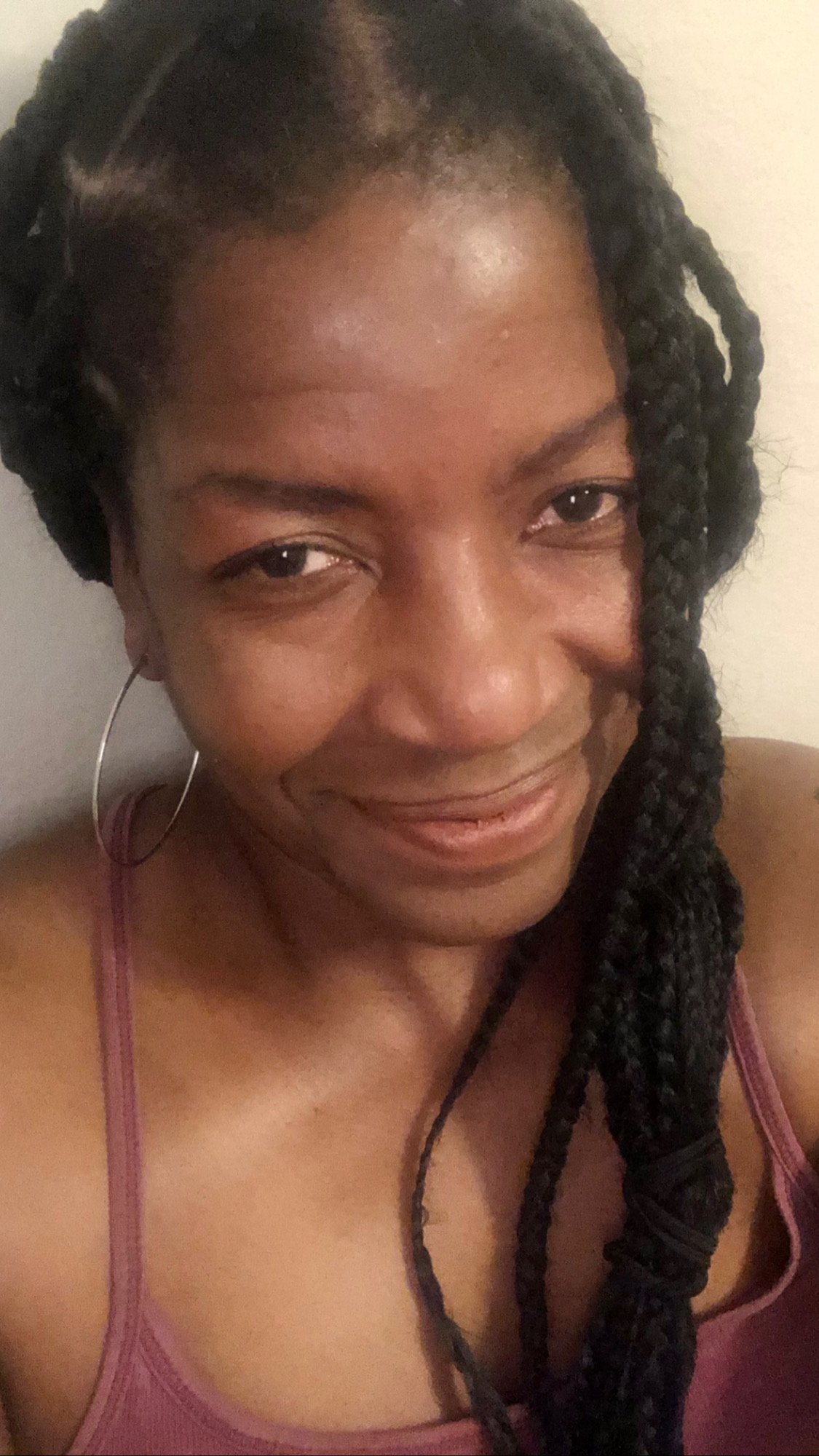
SUSCRIBE to my email newsletter below!
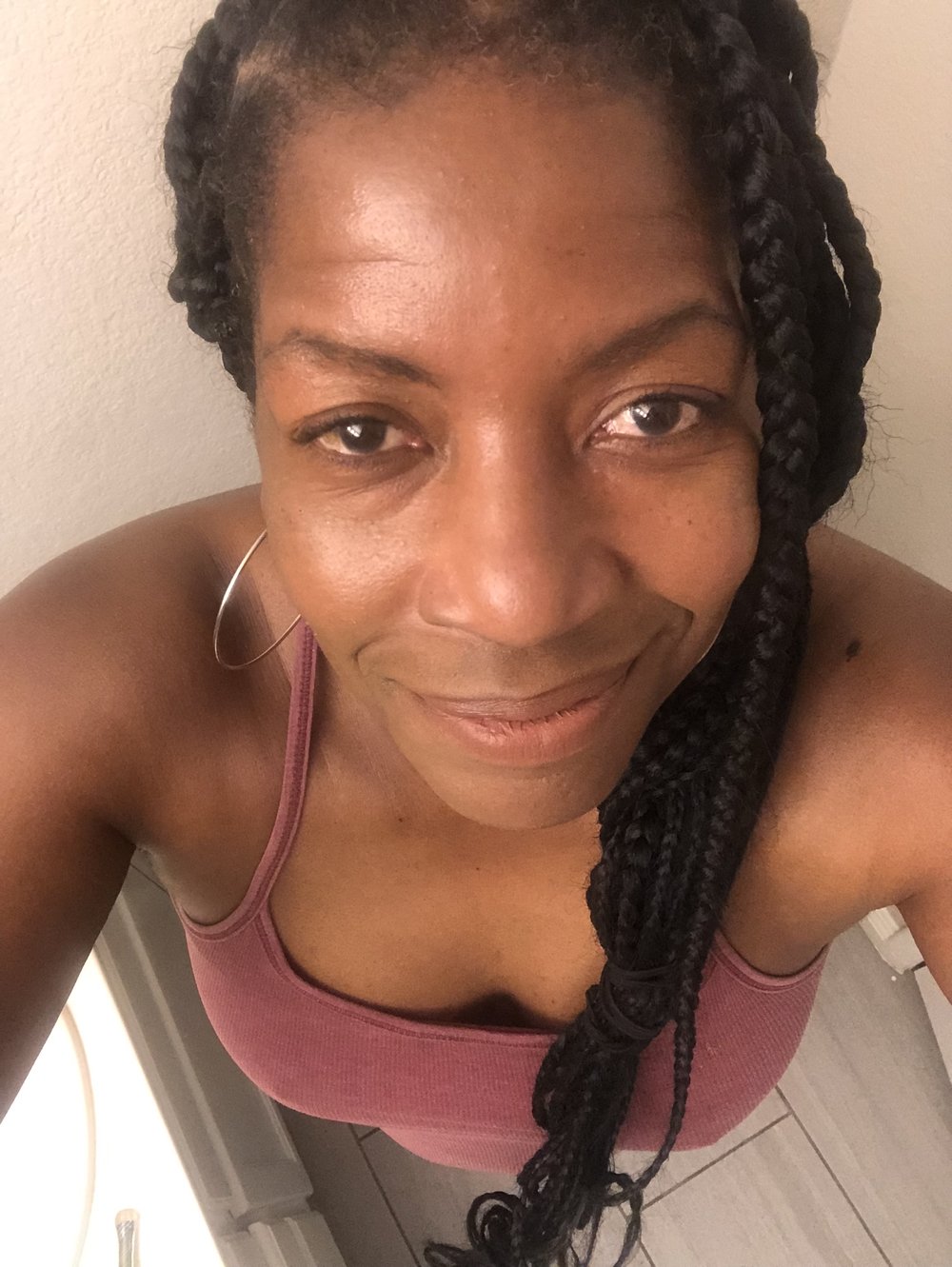 Click to learn more about the weekly volleyball classes and clinics or email info@imrpoveyourvolley.com for information
Click to learn more about the weekly volleyball classes and clinics or email info@imrpoveyourvolley.com for informationCongratulations to my seven Boys-18s Vegas Volley club players who played in two state championship finals yesterday, the 3A and 5A State champinship finals at Sunrise Mountain High School.
TOURNAMENT CHAMPIONS!
A-1 Vegas Volley VBC
In It To Win It Tournament
May 2 - 4, 2025 Tournament
Gold Medalists
18s Premier Division
Vegas Volleyball's Unsung Heroes: Celebrating Moms with Peace Love Volleyball Shirts
Ready to energize your volleyball mom journey?
Subscribe to my 'Producing Powerful Passionate Peaceful Players' email list above on ImproveYourVolley.com.
You'll receive energy-boosting tips, exclusive insights from me, Coach April Chapple on maintaining momentum in volleyball.
Let's power up the Vegas volleyball scene together!
Recent Articles
-
5 Essential Serving Tips from Tennessee's #2 Career Aces Record Holder
Dec 09, 25 11:39 PM
I've identified the 5 essential serving tips that separate confident servers from struggling ones and you'll serve with the confidence that creates aces -
The Volleyball Toss How Consistent Is Your Ball Toss Before You Serve?
Dec 07, 25 12:29 AM
The volleyball toss for the overhand serve needs to consistently be two feet up in the air and one foot in front of front foot which puts the ball in front of your serving arm. -
Shop Small: Real Volleyball Training With + Results From A Real Coach
Dec 03, 25 10:30 AM
Support a woman-owned business. Get training from a former elite pro with 13+ years coaching experience. Ditch the big box store--invest in proven results.

